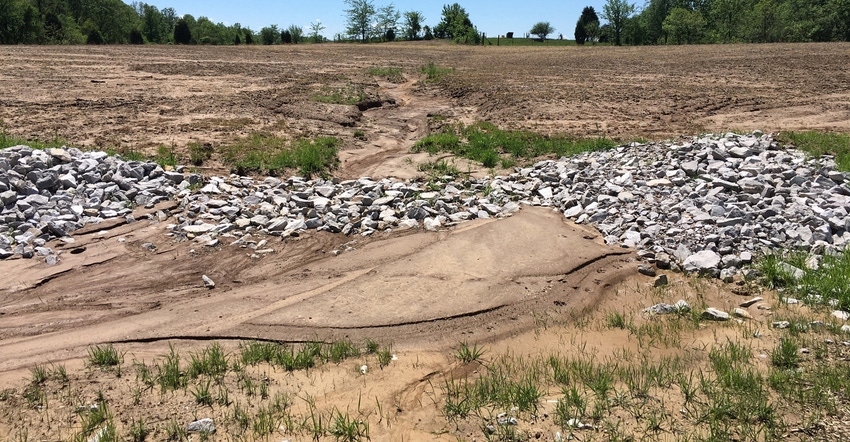May 22, 2017

If Mother Nature ever sent a wake-up call, the monsoons in late April and early May were it. Within days after the 2017 Indiana General Assembly adjourned without providing additional funds for Clean Water Indiana, the heavens let loose. Resulting soil erosion was devastating.
Let’s hope it’s eye-opening to each member of the Legislature. While this session took many positive actions for agriculture, it just held the course on money for soil and water conservation efforts.
Funding for soil conservation and water quality improvement efforts in Indiana is complicated. Here’s a closer look.
• Current funding. Jennifer Boyle Warner, director of the Indiana Association of Soil and Water Conservation Districts, explains that Clean Water Indiana is included in the state budget for $1 million in general appropriations per year. This is the same level of support allocated by the 2015 Legislature. In addition, soil and water’s portion from the cigarette tax is estimated at $2.9 million for 2017.
• What IASWCD asked for in 2017. Boyle Warner says IASWCD advocated for an additional $1 million-per-year increase for Clean Water Indiana. Clean Water Indiana money helps fund soil conservation projects.
Several key legislators responded positively to the message, but in the end, funding was status quo for soil conservation.
The conclusion is obvious; soil conservation and water quality aren’t priorities. That’s unfortunate.
What some legislators may not realize is that all of Indiana’s neighboring states fund soil conservation efforts at a much higher level than Indiana. It is a higher priority in those states.
• Need new dedicated funding. The most troubling part of all this is that a good share of the money channeled into supporting the Division of Soil Conservation within the Indiana State Department of Agriculture comes from a small portion of the cigarette tax. That source was an eleventh hour compromise to get some funding for T by 2000, the forerunner to Clean Water Indiana, in 1986. It was never the funding source of choice of IASWCD.
Boyle Warner says there is a 3% to 4% loss in that funding each year. It puts soil and water backers in a precarious position. They want the number of people smoking to decline, but as it does, soil and water receives less funding.
An IASWCD task force a few years ago suggested a tax on bottled water. In an ideal world, it makes perfect sense. In the real world, business forces aren’t too keen on taxing their product. Insiders say IASWCD thought it had a winner this time — add a fee to license plates. That idea fell apart as legislators eyed the fee for road funding. It was included in the road funding bill.
Boyle Warner says IASWCD will kick off another task force to search for a new workable source of dedicated funding.
Legislators need to join them in this search. Mother Nature just delivered a painful blow showing how important the need is for more help. Continuing to fund these efforts on the backs of smokers is just not right. Hoosiers can do better than that.
It’s time for the Legislature to get serious about funding soil conservation and water quality efforts at a significant level. It’s also time to find a dedicated source of funding that makes sense and ensures funds for protecting soil and improving water quality for decades to come.
You May Also Like




